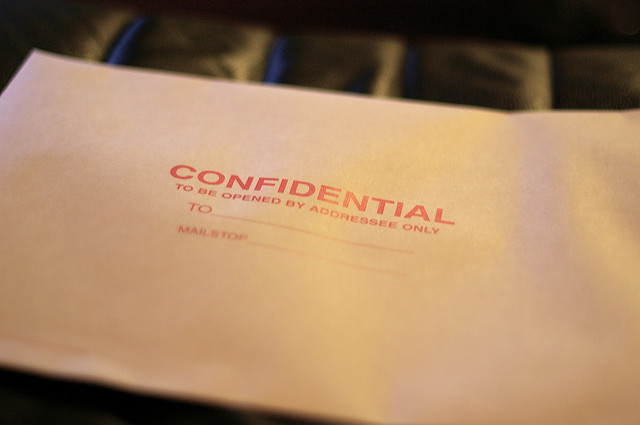
The milk run from Canberra to RAAF Richmond left on Fridays. In the early 1990s, the US Air Force C-141 Starlifter aircraft from Hawaii always visited the RAAF airbase near the Blue Mountains on a Friday. Weekend crew rest in nearby Sydney was a popular perquisite.
Early every Friday, a government vehicle would leave the Defence Headquarters compound in Canberra to collect the highly-sensitive contents of sealed containers, among the Starlifter’s pallets of cargo. The ‘milk run’ round trip would take the entire day, finally depositing spools of satellite imagery in a windowless, compartmented facility within the Joint Intelligence Organisation.
First thing the following Monday, trained analysts would pore over metres of week-old film, brightly lit from beneath, using stereoscopic technology that would have been familiar to British photographic interpreters at RAF Medmenham during World War Two.
In those days, the World Wide Web was only slowly becoming publicly accessible and Google Earth was more than a decade away. Access to expensive, highly-classified technology—available only to certain vetted government personnel—provided the competitive advantage that enabled Soviet wheat crops to be estimated, missiles in Cuba to be identified, the Ho Chi Minh Trail to be monitored and Saddam’s Republican Guard to be wiped out.
The post-Cold War globalisation and democratisation of technology has significantly diminished the intelligence edge we once enjoyed. Now the same GPS technology that guides smart bombs onto moving vehicles is used by couriers to home deliver a pizza before it goes cold. The infrared device that opens garage doors can remotely detonate a roadside bomb. Apple vs. the FBI highlighted the sophistication of commercially-available encryption. And high-resolution satellite imagery—the equal of government product—is now delivered digitally only hours after being ordered from online vendors.
Technology has equally disrupted the centuries-old state monopoly on reportage and cablegrams by diplomats and attachés posted to foreign parts. Almost all the world’s leading newspapers are available at the click of a mouse. For those who want analysis with their news, services such as The Economist Intelligence Unit and Texas-based Strategic Forecasting Inc. are available for hire, while free almanacs like The CIA World Factbook are updated weekly.
The qualitative edge once reserved exclusively for state intelligence agencies is history. It’s unclear how far the Australian Intelligence Community has recognised that new reality, or whether intelligence agencies have transformed Cold War era processes and practices to compete on today’s relatively level playing field. Even with the very best intellectual talent, government organisations aren’t noted for agility and adaptability.
The hardest addiction to kick will be a learned dependency on highly-classified intelligence, made even more alluring by every codeword and handling caveat.
It’s uncertain whether the unthinkable is ever imagined by the intelligence community: a scenario in which cyberwarfare by an opposing force chokes the pipeline of allied intelligence flowing to Australian analysts. How would intelligence support to operations be conducted if foreign hackers successfully shut down our classified systems? Could commercially-available alternatives be utilised, such as during the initial search for MH17 in Ukraine?
Sudden loss of traditional intelligence sources in times of crisis is a genuine concern, though such a contingency is probably never exercised. Were the drug ever denied, the cold turkey would be painful.
There’s no doubting the need for national intelligence assets operated by and for government, supporting clear-eyed decision making at the highest levels. Nor is the requirement for security around the sources and methods used by government in question. But how much classified intelligence product, expensive to operate and difficult to protect, is enough? Might there even be too much on tap for analysts to digest?
Those are the kinds of questions that will confront a forthcoming review of the Australian Intelligence Community, commissioned this month by the Turnbull government to assess ‘whether our current intelligence arrangements, structures and mechanisms are best placed to meet the security challenges we are likely to face in the years ahead’. The commercial sector uses open source intelligence and counter-intelligence every day to make decisions on ventures, investment and staffing. Just as an Edward Snowden can poison diplomatic relations, so a Nick Leeson can destroy merchant banks. An ill-conceived decision to invade another nation can lead to disaster, and unchecked safety standards in jurisdictions like Brazil can cause physical and financial ruin.
All-source intelligence, analysed in-house or contracted out to the growing number of bespoke service providers catering for the big end of town, underpins decisions around risk and uncertainty, as much in Melbourne boardrooms as in the Canberra cabinet rooms. In global business, technology is driving both sides of the equation, as multinational corporations mine big data, while dealing with constant threats from cyberspace. And that’s occurring efficiently, if the ASX is any indication, outside the terrarium of government agencies.
The latest review of Australia’s intelligence services is likely to focus—unsurprisingly—on Australia’s intelligence services. The inclusion among the review team of an eminent SIGINT professional from the UK will afford comparative insights into another Western-style government intelligence agency. But comparing apples and apples may not reveal much that is new.
The Canberra to Richmond milk run of the early 1990s provides a distant mirror on how intelligence was handled before digital technology revolutionised our lives. The arrangements, structures and mechanisms of government intelligence services may have moved with the times—or not. Examining how business intelligence has developed and how the private sector uses it today might be a more useful approach. There’s an uneasy sense that technology may be doing to government intelligence agencies what market forces did to home-delivered milk.

